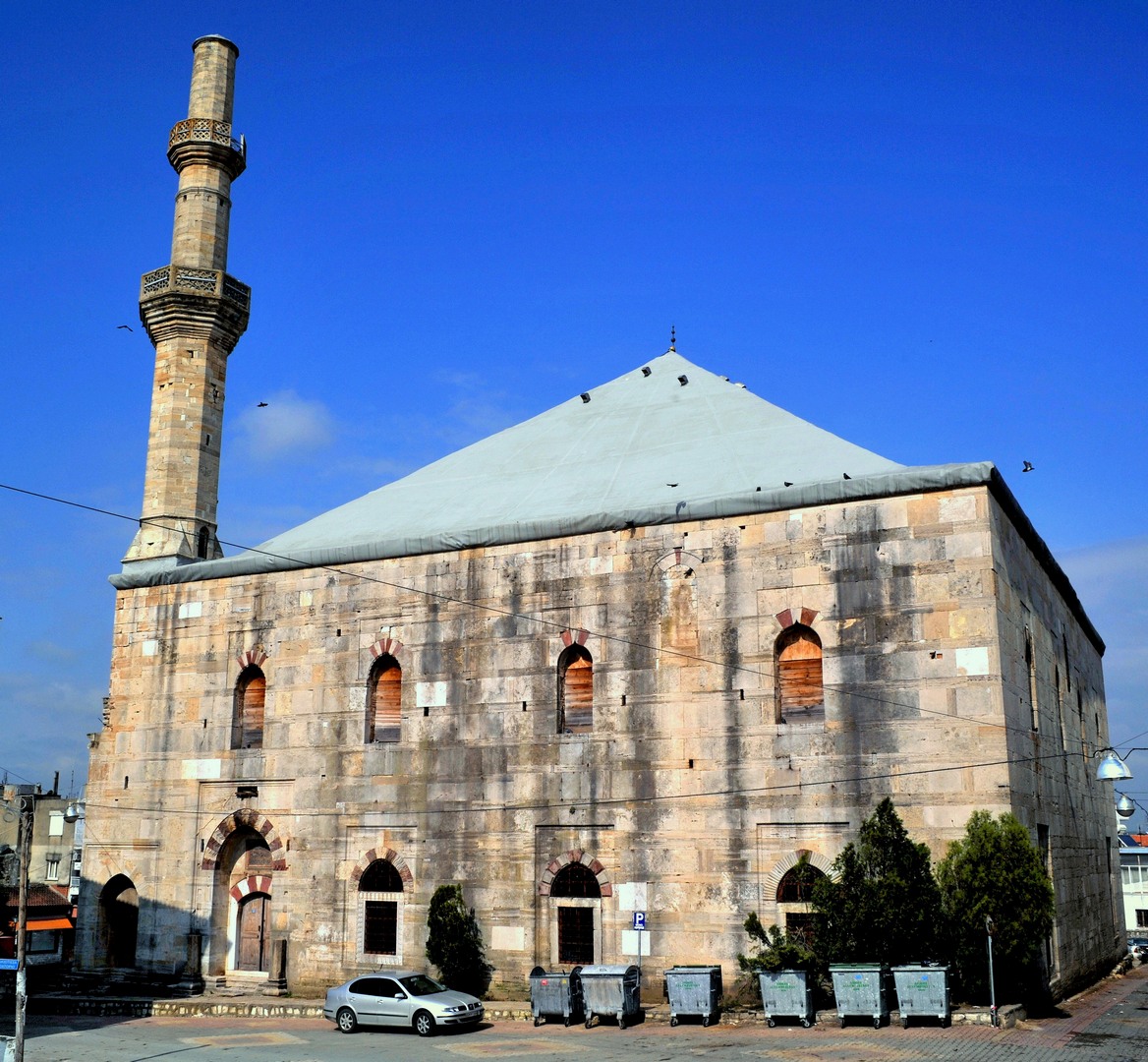Description
Property Name: Çelebi Sultan Mehmed Mosque
Inventory No: 30-2553-1
Date of infill of the inventory form: 2008-02-15
Country (State party): Greece
Province: Didymoteichon
Town:
Geographic coordinates: 41° 20′ 56.7″ N
26° 29′ 37.61″ E
Historic Period: Early Ottoman (1299-1453)
Year of Construction: 1420
Style: Early Ottoman
Original Use: Mosque
Current Use: Mosque
Architect: Architect Ivaz Pasa
Significance
The Çelebi Sultan Mehmed Mosque is located in the central square of Didymoteichon, a village in Greece, close to the Turkish border. Its construction began in 1420 with the order of Ottoman Sultan Mehmed II (1413-1421) to Architect Ivaz Pasa. The mosque consists of a square prayer hall and a single minaret. A hipped roof, supported by the walls and four square-piers, covers the prayer hall. The main body of the mosque is constructed of cut stone. The wooden roof was initially covered with lead. Accessed by a set of stairs, the main entrance is placed at the center of the northern façade. Its niche is roofed by a semi-dome with fourteen ribs. Red and white stones form the arch that crowns the original wooden door.
Selection Criteria
vi. to be directly or tangibly associated with events or living traditions, with ideas, or with beliefs, with artistic and literary works of outstanding universal significance
State of Preservation
Under the second Turkish possession of Didymoteichon in early twentieth century, a second smaller balcony was added to the main body of the minaret. In 1981, the periphery of the mosque was cleared from adjacent buildings and structures and a precinct wall was built. An open-air coffeehouse operates in the place of the absent portico. After what happened, on March 22, 2017, a fire broke out in the mosque during the restoration work on the roof during the restoration which was started in 2016 by the Greek authorities. It was severely damaged as a result of a fire that broke out in the early hours of 22 March. The fire was extinguished, but the entire ceiling was destroyed. Damages occurred on the interior and walls of the Mosque.
References
–


